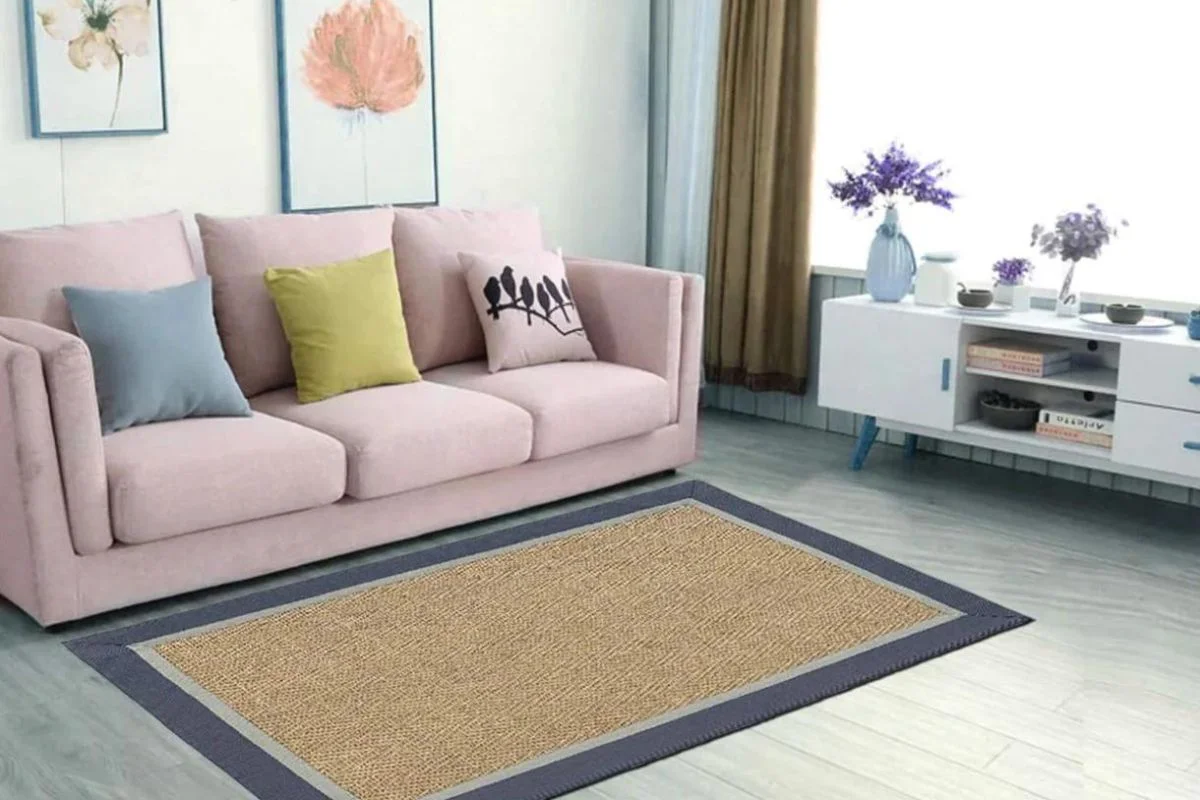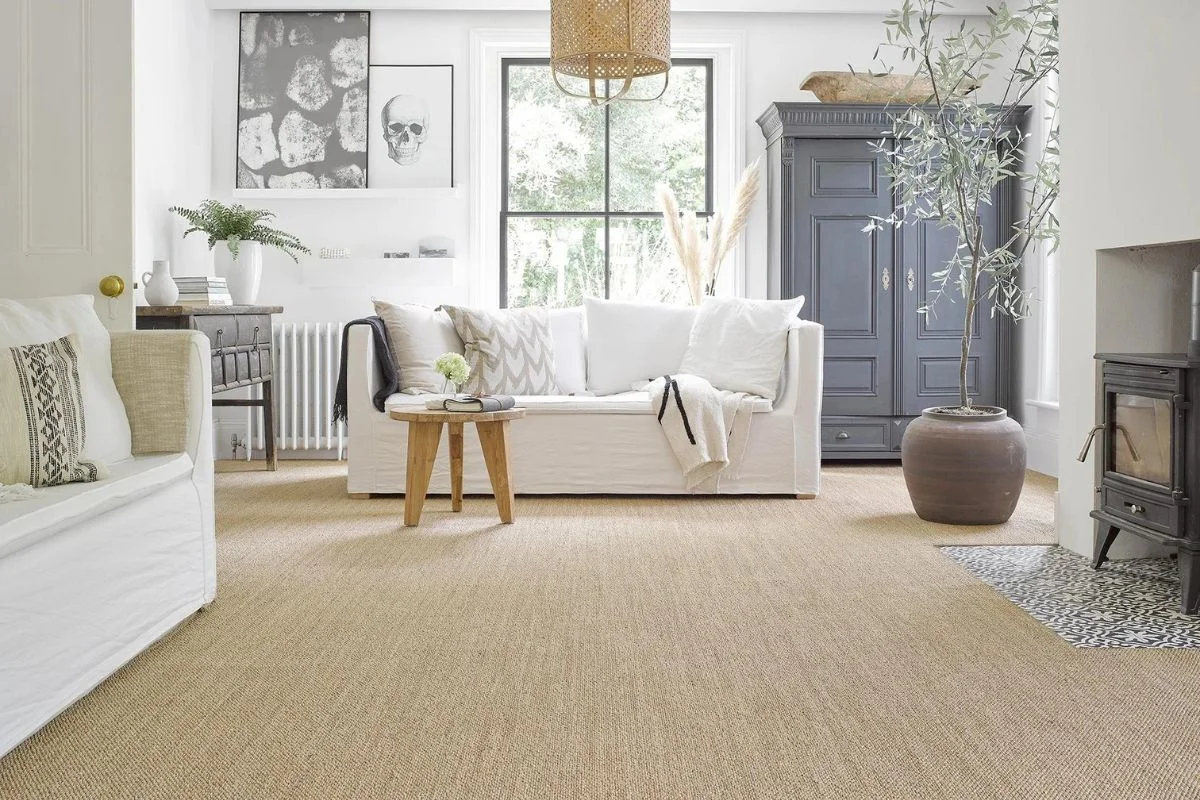
Sisal carpets embody a harmonious blend of natural beauty and remarkable durability, making them a sought-after choice in the world of interior design. Derived from the fibers of the agave plant, sisal carpets offer a distinctive aesthetic appeal characterized by their earthy tones and unique texture. Beyond their visual allure, sisal carpets boast exceptional strength and resilience, capable of withstanding the rigors of daily life while maintaining their timeless elegance.
In this exploration of sisal carpets, we delve into the characteristics that set them apart as a flooring option of choice for discerning homeowners and designers alike. From their origins to their practical benefits, we uncover the reasons why sisal carpets continue to captivate enthusiasts of natural, sustainable living. Join us as we unravel the allure of sisal carpets and discover how they effortlessly marry beauty with durability to elevate the ambiance of any space.
Brief overview of sisal carpets
Sisal carpets are natural floor coverings made from the fibers of the agave sisalana plant, primarily grown in regions like Brazil, Mexico, and East Africa. These carpets offer a unique blend of beauty, durability, and sustainability, making them a popular choice for eco-conscious homeowners and interior designers.
Sisal fibers are known for their strength and resilience, making sisal carpets highly durable and capable of withstanding heavy foot traffic. The natural texture and earthy tones of sisal carpets add warmth and character to any space, creating a cozy and inviting ambiance.
In addition to their aesthetic appeal, sisal carpets are environmentally friendly and sustainable. The agave plant requires minimal water and pesticides to grow, making sisal carpets a renewable and eco-conscious flooring option.
Sisal carpets also offer practical benefits such as sound insulation and hypoallergenic properties, making them suitable for allergy sufferers and sensitive individuals.
Overall, sisal carpets provide a natural and stylish flooring solution that enhances the beauty of any room while promoting sustainability and environmental consciousness.
What are Sisal Carpets?
Sisal carpets are floor coverings made from the natural fibers of the Agave sisal Ana plant, which is primarily cultivated in regions like Brazil, Mexico, and East Africa. These carpets are known for their durability, natural beauty, and sustainability, making them a popular choice for both residential and commercial spaces.
The process of making sisal carpets begins with the extraction of long, sturdy fibers from the leaves of the sisal plant. These fibers are then spun into yarns and woven or tufted into carpet backing to create the finished product.
Sisal carpets typically have a coarse texture and a distinctively earthy appearance, with natural variations in color ranging from light beige to warm brown tones. The rough texture of sisal fibers adds a rustic charm to interior spaces, while their neutral colors make them versatile enough to complement a wide range of design styles.
One of the key advantages of sisal carpets is their exceptional durability and resilience. Sisal fibers are naturally strong and resistant to wear and tear, making sisal carpets well-suited for high-traffic areas such as hallways, living rooms, and commercial spaces.
In addition to their durability, sisal carpets offer other practical benefits. They are naturally static-resistant and have anti-static properties, making them less likely to attract dust and debris. Sisal fibers also have natural sound-absorbing qualities, helping to reduce noise levels and create a quieter indoor environment.
Furthermore, sisal carpets are environmentally friendly and sustainable. The sisal plant requires minimal water and pesticides to grow, making sisal carpets a renewable and eco-conscious flooring option. Additionally, sisal carpets are biodegradable, meaning they can break down naturally at the end of their lifecycle without causing harm to the environment.
Overall, sisal carpets combine durability, natural beauty, and sustainability, making them a popular choice for homeowners and designers who value eco-friendly materials and timeless style.
Definition and origin of sisal carpet
Sisal carpet are natural plant fibers extracted from the leaves of the Agave sisal Ana plant, which is native to hot and arid regions such as Mexico, Brazil, and East Africa. The sisal plant, also known as sisal agave or henequen, belongs to the Agave cease family and is characterized by its succulent-like appearance with long, sword-shaped leaves.
The process of extracting sisal fibers begins by harvesting the mature leaves of the sisal plant. These leaves contain bundles of strong and durable fibers that run longitudinally along the leaf structure. After harvesting, the leaves are crushed and beaten to remove the pulp and extract the fibers.
Once extracted, the sisal fibers undergo a series of processing steps to prepare them for various applications, including the production of ropes, twines, mats, and carpets. The fibers are cleaned, combed, and sorted to remove impurities and ensure uniformity in length and thickness.
Sisal fibers are prized for their exceptional strength, durability, and resistance to wear and tear. They are also known for their natural abrasion resistance and moisture-wicking properties, making them suitable for a wide range of industrial and agricultural applications.
In addition to their practical utility, sisal fibers are valued for their sustainability and eco-friendliness. The sisal plant is highly efficient in water usage and requires minimal irrigation and pesticides to thrive, making it a renewable and environmentally friendly source of natural fibers.
Overall, sisal fibers are prized for their versatility, durability, and sustainability, making them a popular choice for a variety of applications in industries ranging from agriculture and textiles to construction and manufacturing.
The Benefits of Sisal Carpets
Sisal carpets offer a multitude of benefits that make them a preferred choice for eco-conscious homeowners and interior designers. Here are some key advantages of sisal carpets:
Durability: Sisal fibers are exceptionally strong and resilient, making sisal carpets highly durable and capable of withstanding heavy foot traffic and wear and tear over time. This durability ensures that sisal carpets maintain their appearance and integrity even in high-traffic areas of the home.
Natural Beauty: Sisal carpets have a distinctive natural texture and appearance, with earthy tones ranging from light beige to warm brown hues. The unique texture and color variations of sisal fibers add warmth, character, and a touch of rustic charm to any interior space, enhancing its aesthetic appeal.
Sustainability: Sisal carpets are made from natural fibers extracted from the leaves of the sisal plant, which is a renewable and sustainable resource. The sisal plant requires minimal water and pesticides to grow, making sisal carpets an eco-friendly flooring option that promotes environmental conservation and sustainability.
Hypoallergenic Properties: Sisal fibers have natural anti-static and hypoallergenic properties, making sisal carpets suitable for individuals with allergies or sensitivities. Sisal carpets are less likely to trap dust, allergens, and pet dander compared to synthetic carpets, promoting a healthier indoor environment.
Moisture Regulation: Sisal fibers have natural moisture-wicking properties, allowing them to absorb excess moisture from the air and release it back into the environment. This helps regulate humidity levels in the home and prevents the growth of mold and mildew, making sisal carpets ideal for humid climates and moisture-prone areas.
Sound Absorption: Sisal carpets have natural sound-absorbing qualities, helping to reduce noise levels and create a quieter indoor environment. This makes sisal carpets ideal for homes with open floor plans, high ceilings, or hardwood flooring, where sound transmission can be an issue.
Versatility: Sisal carpets come in a variety of textures, weaves, and patterns, allowing for customization to suit different design preferences and aesthetic tastes. Whether you prefer a sleek and modern look or a more rustic and organic feel, sisal carpets offer versatility and flexibility in design.
Sisal Carpets: Installation
Installing sisal carpets requires careful planning and attention to detail to ensure a successful and long-lasting result. Here are the key steps involved in the installation process of sisal carpets:
Preparation of Subfloor: Before installing sisal carpets, it’s essential to prepare the subfloor properly. The subfloor should be clean, dry, and free of any debris or imperfections. If necessary, level the subfloor and repair any cracks or uneven surfaces to ensure a smooth and stable base for the carpet.
Acclimatization of Sisal Carpet: Sisal carpets should be allowed to acclimate to the room’s temperature and humidity levels before installation. Unroll the carpet and let it sit in the room for at least 24 hours to adjust to its surroundings.
Measurement and Cutting: Measure the dimensions of the room carefully and cut the sisal carpet to fit. Leave a slight excess around the edges to allow for trimming and adjustments during installation.
Installation Method: Sisal carpets can be installed using either the direct glue-down method or the stretch-in method. The appropriate installation method will depend on the type of subfloor and the specific requirements of the project.
Direct Glue-Down Method: In this method, the sisal carpet is adhered directly to the subfloor using a suitable adhesive. Apply the adhesive evenly to the subfloor and carefully lay the carpet in place, smoothing out any wrinkles or bubbles as you go.
Stretch-In Method: The stretch-in method involves stretching the sisal carpet over a cushioned underlayment and securing it along the edges using tack strips or gripper rods. Use a power stretcher to ensure a tight and uniform fit across the entire surface of the carpet.
Seaming and Finishing: If necessary, seam the sisal carpet pieces together using a durable seam tape and hot melt adhesive. Trim any excess carpet along the edges and secure them using transition strips or edge bindings for a clean and finished look.
Final Inspection: Once the installation is complete, inspect the sisal carpet carefully for any visible seams, wrinkles, or imperfections. Make any necessary adjustments or repairs to ensure a flawless finish.
Post-Installation Care: After installation, avoid walking on the sisal carpet for at least 24 hours to allow the adhesive to cure properly. Regular vacuuming and periodic professional cleaning will help maintain the appearance and longevity of the sisal carpet over time.
Maintenance tips and cleaning techniques for sisal carpets
Maintaining and cleaning sisal carpets requires special care to preserve their natural beauty and extend their lifespan. Here are some maintenance tips and cleaning techniques for sisal carpets:
Regular Vacuuming: Vacuum your sisal carpet at least once a week to remove dust, dirt, and debris that can accumulate on the surface. Use a vacuum cleaner with a brush attachment or a suction-only vacuum to avoid damaging the delicate fibers of the sisal carpet.
Immediate Spot Cleaning: Attend to spills and stains promptly to prevent them from setting into the fibers of the sisal carpet. Blot the affected area with a clean, dry cloth or paper towel to absorb excess liquid, then gently dab the stain with a mixture of mild detergent and water. Avoid rubbing or scrubbing the stain, as this can spread it further and damage the fibers.
Avoid Moisture: Sisal carpets are sensitive to moisture, so it’s important to avoid excessive moisture or humidity in the area where the carpet is installed. Place moisture-absorbing mats or rugs at entryways and high-traffic areas to prevent water from being tracked onto the sisal carpet.
Use Dry Cleaning Methods: Avoid using water-based cleaning methods on sisal carpets, as excessive moisture can cause the fibers to swell and distort. Instead, opt for dry cleaning methods such as dry powder cleaners or dry foam cleaners specifically designed for natural fiber carpets.
Test Cleaning Products: Before using any cleaning products or solutions on your sisal carpet, always test them in an inconspicuous area to ensure compatibility and prevent damage. Allow the test spot to dry completely and check for any adverse reactions or discoloration before proceeding with the full cleaning process.
Professional Cleaning: Periodically, consider hiring a professional carpet cleaning service that specializes in natural fiber carpets to deep clean and refresh your sisal carpet. Professional cleaners have the expertise and equipment to safely and effectively remove embedded dirt, stains, and odors without causing damage to the delicate fibers.
Preventive Measures: To minimize wear and tear on your sisal carpet, place furniture coasters or pads under the legs of heavy furniture to distribute weight evenly and prevent indentations. Rotate area rugs and furniture regularly to prevent uneven wear patterns on the sisal carpet.
Conclusion
In conclusion, maintaining and cleaning sisal carpets requires careful attention to preserve their natural beauty and longevity. By following the recommended maintenance tips and cleaning techniques, you can keep your sisal carpet looking fresh and beautiful for years to come.







